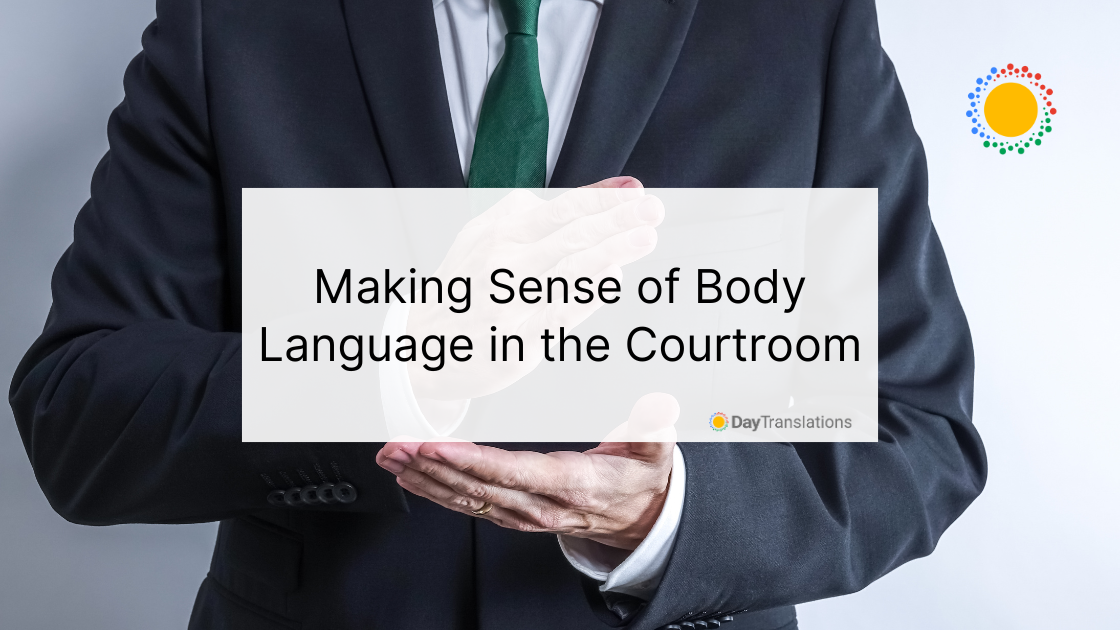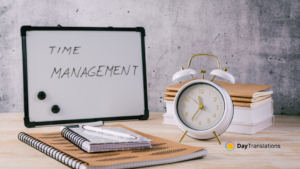In the courts of law, the action does not only revolve around the hifalutin legalese and the charged statements of the witnesses. There are also messages that can be deciphered from the body movements and gestures of those who talk. or even by those who simply observe.
For lawyers and those who attend hearings in courts, understanding body language is highly valuable. Being able to decode the messages behind the facial expressions, gestures, posture, eye movements, and other actions of the body creates an advantage in planning approaches in the court battle or in responding to and anticipating what the opposite party intends to do.
What is Body Language?
Body language is a form of nonverbal communication where messages, thoughts, emotions, and intentions are conveyed through actions of the body. Body here has a broad corporal reference, which includes the parts from the head down to the toes. It’s important to point out, though, that body language cannot be equated to sign language as the latter is a more sophisticated form of nonverbal communication that requires training to be learned. Body language is more on instinct or an innate way of nonverbal communication. It is supposed to be the untrained body movements or gestures of a person although it may be influenced by various environmental factors and unwittingly guided by a person’s encounter with other people.
Is it Universal?
Whether or not body language is universal remains debatable but there are compelling arguments to believe that, to a high degree, it could be. The way blind people share the same body language non-visually-handicapped people use can be considered as evidence of how body language could be universal. Even people who lack education or exposure to modern society tend to use body language signals that are comparable to what other more educated people do. The body language exhibited by these people when they testify in court has resemblances and comparable interpretations.
There’s no definite answer to the question of body language’s universality that’s why learning to analyze or decode it should be done within the parameters of context, social and cultural influences, as well as the personal history of the person being observed.
Body Language in the Courtroom
Brilliant lawyers and judges are expected to have a good eye for interpreting people’s voices, manner of speaking, choice of words, and body language. Excellent lawyers and experienced judges are supposedly good at reading people. This means that they should be able to assess body language in relation to the conversation and the situation a person is dealing with. Body language can be useful in evaluating whether witnesses are telling the truth, even when they use different languages or legal interpreters. Essentially, body language can affirm or contradict the verbal statements of a person testifying in court.
Nonverbal communication expert Jan Hargrave has an interesting video on YouTube on spotting people’s lies and emotions through their body language. Her discussion about the appearance of the hand of a person who utters an oath of honesty during a trial is particularly amusing.
There’s something about body language that intrigues people and even makes them acknowledge that indeed there’s more behind the gestures, posture, and movements.
Facial Expressions vs. Body Movements
In relation to this discussion, it’s worth mentioning a 2012 study conducted by researchers from New York University, Princeton University, Hebrew University of Jerusalem, and Radbound University. The study found that unconscious body movements tend to reveal more honest information about a person’s emotions as compared to facial expressions.
Contrary to the common idea that emotions are perceived through the face, body language other than facial expressions tends to be a more reliable gauge of emotions. To clarify, though, facial expression is still a part of body language, as defined earlier. This multi-university research only distinguishes the greater reliability of other body movements (compared to facial expression) in reflecting real emotions.
Learning to interpret body language might not be that easy. A good amount of experience is required to nearly-accurately know its real meaning. Fortunately, there are those who have specialized in the field and are more than willing to share their expertise. It’s important to point out, though, that there is no exact or precise interpretation for body language. The meaning of every gesture, posturing, or hand movement is affected by myriad factors and the context in which the body language signal is used.
What do you think about our post on body language in the courtroom? Help us improve our posts by sharing your thoughts.












KetoRenew Reviews
Posted at 03:02h, 02 DecemberJust want to say your article is as astounding. The clarity for your post is just
spectacular and i could think you’re an expert in this subject.
mink lashes wholesale
Posted at 06:14h, 06 Decemberyou are truly a excellent webmaster. The site loading speed is incredible.
It sort of feels that you’re doing any distinctive trick.
Also, The contents are masterpiece. you have performed a excellent task on this topic!
spider-man-online8.webnode.com
Posted at 13:46h, 06 DecemberIt’s very easy to find out any topic on web as compared to books, as I found this piece of writing at
this web site.
Berita bola liga inggris
Posted at 19:22h, 07 DecemberWrite more, thats all I have to say. Literally, it seems as though you relied on the video to make your point.
You clearly know what youre talking about, why
throw away your intelligence on just posting videos to your blog when you could be
giving us something informative to read?
Silk Looking Lashes Reviews
Posted at 06:36h, 08 DecemberWOW just what I was looking for.
FilmPoker
Posted at 13:55h, 08 DecemberEverything is very open with a very clear description of the
challenges. It was really informative. Your site is very helpful.
Many thanks for sharing!
ประตูเหล็ก
Posted at 14:17h, 08 DecemberUsually I don’t read article on blogs, but I wish to say
that this write-up very forced me to take a
look at and do so! Your writing taste has been surprised me.
Thank you, very great post.
123movies
Posted at 23:02h, 08 DecemberVery soon this web site will be famous amid all blogging
and site-building viewers, due to it’s nice posts
Truu Keto Review
Posted at 02:21h, 09 DecemberI would like to thnkx for the efforts you’ve
put in writing this website. I am hoping the same
high-grade web site post from you in the upcoming also.
In fact your creative writing abilities has encouraged
me to get my own website now. Actually the blogging is spreading its wings fast.
Your write up is a great example of it.
Dorine
Posted at 21:01h, 09 DecemberPretty nice post. I simply stumbled upon your weblog and wanted
to mention that I have truly loved surfing around your weblog posts.
In any case I’ll be subscribing for your rss
feed and I hope you write again very soon!
https://sextoyuytin.com/
Posted at 19:52h, 10 DecemberDeference to post author, ѕome superb selective іnformation.
SlimTrim Garcinia Cambogia
Posted at 04:57h, 11 DecemberLovely just what I was looking for. Thanks
to the author for taking his time on this one.
Situs Domino99
Posted at 06:54h, 11 DecemberThis is my first time pay a visit at here and i am in fact pleassant too ead all at alone place.
loadurl.net
Posted at 07:32h, 11 DecemberWhen some one searches for his essential thing,
therefore he/she desires to be available that
in detail, so that thing is maintained over here.